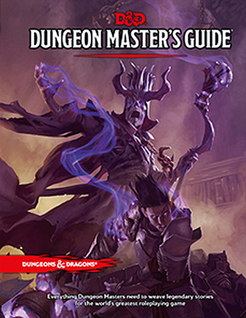 Using one format for all types of adventures unchangingly is a problem. You want to adapt the format according to the style of adventure (investigation, exploration, combat-heavy, event-driven, etc.)
Using one format for all types of adventures unchangingly is a problem. You want to adapt the format according to the style of adventure (investigation, exploration, combat-heavy, event-driven, etc.)
When I look to describing a particular scene or encounter, I think there are a few key areas that should be present. I look for the following:
- An opening paragraph or boxed text that sets out the initial situation, giving the players and DM some idea of what to expect in the encounter. I choose whether or not to use boxed text based on how much the area might vary. If it’s always the same for the PCs, then boxed text is fine. If it might change depending on approach, events, etc., then describing the room without boxed text is more necessary. Also, if the room is very simple, then boxed text might not be needed.
- Details on what is present, and how it interacts with the PCs.
- Important details are sectioned off & emphasised by the use of bold-italic subheadings. So, the boxed text or opening paragraph mentions they exist; how to handle them is in little subsections.
- If details of an NPC break the flow of the encounter too much, put them in a sidebar, but accessible from the main text.
- Put monster types (that have stat blocks, either in the appendix or another book) in bold type.
- Don’t include stat blocks in the text of the adventure; they rarely read well. (There are exceptions, but most adventures work better without).
- Do *NOT* use bold type for ability (skill) checks. Rather, use the subheadings to control where the ability checks are. Wall of Text isn’t fun, but subheadings help control it. (There are several authors who bold ability checks, but that practice is not in the Wizards style guide).
- Use dot points to list information that the NPCs know, especially if they’re telling it to the PCs, and doubly especially if lengthy.
- Pay attention to the Wizards style guide!
- If there are global features (temperature, light, etc.) for a dungeon, put them in a sidebar at the beginning of the dungeon. If it varies per room, incorporate them into the area text; typically, in a sidebar.
Here’s a sample encounter:
4. OGRE LAIR
A depressed ogre lounges on a pile of smelly straw in one corner of the cave, fiddling with a collection of bones. He’s unhappy with how his life is proceeding at present, as his mate has left him, and will happily take his frustrations out on any adventurers that might wander by. He does not pursue fleeing characters, nor is he interested in deep and meaningful conversation. A female ogre might make him pay attention, however.
Pile of Straw. This smelly pile of straw is damp and unpleasant. A character that spends 10 minutes searching it may make a DC 15 Wisdom (Perception) check; on a success, they find a magic needle (treat as a luckstone).
Bones. The bones are mostly cracked and belong to woodland deer. If a character succeeds on a DC 10 Wisdom (Medicine) check, they can identify one as an elven femur.
Key Features.
- Smelly, damp, cold.
- Lots of boulders to hide behind or to climb on.
- 15-foot-high ceiling.
- No light.
Is it perfect? No. But it gives you the idea of what’s happening, I hope!
I’m not very fond of the formatting used in the Season 8 D&D Adventurers League adventures; I prefer that used in previous seasons, although – like all formats – they can be misused.
